The Unseen Powerhouse: A Deep Dive into Crankshaft Manufacturing
Have you ever truly considered what goes on inside your car's engine, tirelessly converting combustion into rotational motion? At the very heart of this incredible transformation lies the crankshaft. It's an engineering marvel, a complex component that endures immense stress and heat, yet must perform with unwavering precision. Frankly speaking, without a perfectly crafted crankshaft, your engine simply wouldn't run. This article will take you on a journey through the fascinating world of crankshaft manufacturing, revealing the meticulous processes involved in creating this vital piece of machinery.
To be honest, the journey of a crankshaft from raw material to a high-performance engine component is nothing short of astonishing. It involves a blend of traditional craftsmanship and cutting-edge technology, all aimed at achieving the ultimate in strength, durability, and dimensional accuracy. We'll explore everything from the initial material selection to the final stages of quality control, giving you a comprehensive understanding of why crankshaft manufacturing is such a critical and complex field.
The Foundation: Material Selection and Initial Forming Processes
Every great component starts with the right material. For crankshafts, this is particularly true, given the extreme forces they must withstand. The choice typically boils down to two primary methods of initial forming: forging and casting. Each has its own advantages and is chosen based on the specific application, performance requirements, and cost considerations.
Forged Crankshaft Production: Strength Through Grain Flow
Forging is, in many experts' opinions, the superior method for high-performance applications. It involves heating a solid billet of steel—often a high-carbon or alloy steel like 4340 or 1045—to a plastic state and then shaping it using immense pressure from dies. This can be done through open-die forging or, more commonly for crankshafts, closed-die forging.
- Open-die forging: Less common for mass production of crankshafts, but used for very large or custom designs. The metal is shaped between two flat dies, allowing for more flexibility.
- Closed-die forging: This is the workhorse of forged crankshaft production. The hot metal is placed between two dies that contain the shape of the crankshaft. When the dies close under immense pressure, the metal flows into the cavities, taking the desired form.
The key advantage of forging is that it refines the grain structure of the metal, aligning it with the contours of the crankshaft. This "grain flow" significantly enhances the component's strength, fatigue resistance, and overall durability, making forged crankshafts ideal for racing engines, heavy-duty trucks, and high-stress industrial applications. Interestingly enough, this process compacts the material, eliminating internal voids and porosity that could lead to failure under extreme conditions.
Cast Crankshafts: Efficiency and Versatility
While forging offers superior strength, casting provides a more cost-effective and often more efficient method for mass-producing crankshafts, particularly for passenger vehicles and less demanding applications. Cast crankshafts are typically made from ductile iron or nodular cast iron, which offers good strength and excellent vibration damping properties.
The casting process involves melting the chosen iron alloy and pouring it into a mold, which is typically made from sand. Once the metal cools and solidifies, the mold is broken away, revealing the rough crankshaft shape. While casting doesn't offer the same grain flow advantages as forging, advancements in metallurgy and casting techniques have significantly improved the quality and performance of cast crankshafts. Many modern engines rely on cast crankshafts due to their balance of performance, cost, and ease of manufacturing.
Regardless of whether a crankshaft is forged or cast, the initial product is a rough blank. This blank is oversized and still far from the precision component required for an engine. It's at this stage that the true artistry of crankshaft manufacturing begins to unfold.
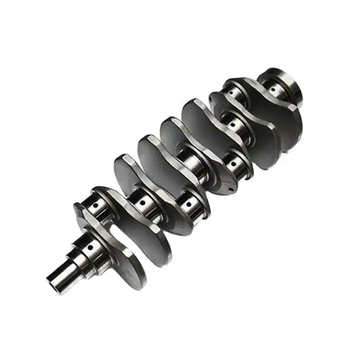
Precision Machining: The Heart of Crankshaft Manufacturing
Once the raw blank is formed, the vast majority of the manufacturing effort shifts to precision machining. This is where the rough lump of metal is transformed into a highly accurate, finely finished component. The crankshaft machining process is incredibly intricate, involving numerous steps to achieve the precise dimensions, surface finishes, and geometric tolerances required for smooth engine operation.
Rough Machining and Centering
The first step in the crankshaft machining process is often rough machining. This involves removing excess material from the forging or casting to bring it closer to the final dimensions. Simultaneously, centering holes are drilled at each end of the crankshaft. These holes are crucial as they serve as reference points for all subsequent machining operations, ensuring concentricity and alignment throughout the process.
Main Journal and Pin Journal Turning
This is arguably the most critical stage. The main journals (which support the crankshaft in the engine block) and the rod journals (or pin journals, to which the connecting rods attach) are turned to their approximate sizes. This is done on specialized lathes, often using multiple cutting tools simultaneously to maximize efficiency. The challenge here is not just turning cylindrical shapes but also dealing with the offset nature of the rod journals, which requires complex programming and precise machine control.
Milling and Drilling: Counterweights and Oil Passages
After turning, various milling operations are performed. Counterweights, essential for balancing the crankshaft and reducing vibration, are often machined at this stage. Additionally, a series of precisely angled and sized oil passages are drilled throughout the crankshaft. These passages are vital for lubricating the main and rod bearings, ensuring the longevity and smooth operation of the engine. Frankly speaking, without these oil passages, the engine would seize up in minutes.
Grinding: Achieving Micro-Precision
Once the journals are turned to near-final dimensions, they undergo grinding. This is a highly precise abrasive machining process that removes very small amounts of material to achieve the extremely tight dimensional tolerances and smooth surface finishes required. The main journals and rod journals are ground to their final diameters, often within microns of accuracy. The surface finish is equally critical, as it directly impacts the life of the bearings. Many experts agree that the quality of the grinding process is a direct determinant of crankshaft performance and longevity.
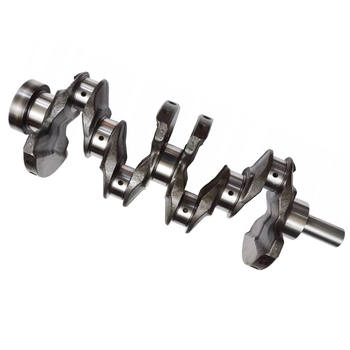
Heat Treatment and Surface Finishing: Enhancing Durability and Performance
Even with precise machining, a crankshaft needs further treatment to withstand the harsh environment of an engine. Heat treatment and various surface finishing techniques are employed to enhance the material's properties, increasing its hardness, wear resistance, and fatigue strength.
Hardening and Tempering
After machining, crankshafts often undergo a hardening process. This typically involves heating the entire crankshaft or specific areas (like the journals) to a high temperature and then rapidly cooling them (quenching). This process transforms the microstructure of the steel, making it significantly harder. However, a hardened crankshaft is also brittle, so it then undergoes tempering—reheating to a lower temperature and slowly cooling—to reduce brittleness and improve toughness without sacrificing too much hardness.
Nitriding and Fillet Rolling: Surface Enhancement
For even greater durability and fatigue resistance, many crankshafts undergo surface treatments:
- Nitriding: This is a low-temperature thermochemical treatment that introduces nitrogen into the surface of the steel. It creates a very hard, wear-resistant layer without causing significant distortion. Nitriding is particularly effective at improving the fatigue strength of the crankshaft, especially in critical areas like the fillets (the radius where the journal meets the web).
- Fillet Rolling: This mechanical process involves applying compressive stress to the fillets of the journals. By inducing residual compressive stresses, fillet rolling significantly improves the fatigue life of the crankshaft, as fatigue cracks often originate in these highly stressed areas. In my experience, this seemingly small detail can have a massive impact on the overall durability of the component.
These treatments are crucial for ensuring the crankshaft can withstand millions of cycles of high stress, friction, and heat without failure. They are a testament to the comprehensive approach required in modern crankshaft manufacturing.
Balancing and Quality Control: The Quest for Perfection
A crankshaft's job is to rotate smoothly at thousands of revolutions per minute. Any imbalance, no matter how slight, can lead to excessive vibration, premature wear of bearings, and even catastrophic engine failure. Therefore, balancing and rigorous quality control are non-negotiable steps in the manufacturing process.
Dynamic Balancing: The Final Touch
After all machining and heat treatment, crankshafts are dynamically balanced. This involves mounting the crankshaft on a specialized balancing machine that spins it at high speed. Sensors detect any imbalances, and the machine identifies the precise locations and amounts of material that need to be removed (usually by drilling small holes in the counterweights) or added (less common, but sometimes weights are attached) to achieve perfect balance. This step is absolutely critical for smooth engine operation and longevity.
Comprehensive Inspection and Quality Assurance
Quality control is integrated throughout the entire crankshaft manufacturing process, not just at the end. However, a final, comprehensive inspection is performed to ensure every specification is met. This includes:
- Dimensional Inspection: Using highly precise instruments like coordinate measuring machines (CMMs) to verify all dimensions, tolerances, and geometric features.
- Surface Finish Inspection: Checking the smoothness of the journals to ensure optimal bearing performance.
- Hardness Testing: Verifying that heat treatments have achieved the desired hardness levels.
- Magnetic Particle Inspection (MPI) or Eddy Current Testing: Non-destructive testing methods used to detect any surface or subsurface cracks that could lead to failure.
- Visual Inspection: A final human check for any visible defects or anomalies.
It's worth noting that the standards for crankshaft quality are incredibly high. A single defect can have severe consequences, which is why manufacturers invest heavily in advanced inspection technologies and highly trained personnel. The commitment to precision crankshaft engineering is evident in every stage.
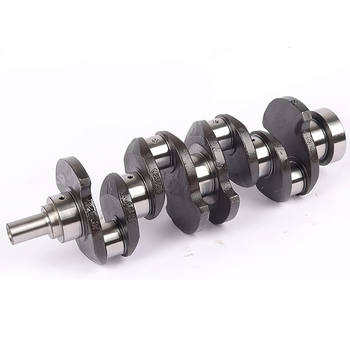
Innovations and the Future of Crankshaft Manufacturing
The world of automotive and industrial manufacturing is constantly evolving, and crankshaft manufacturing is no exception. While the fundamental principles remain, new materials, processes, and technologies are continually being developed to improve efficiency, performance, and sustainability.
Advanced Materials and Lightweighting
There's an ongoing push for lighter, stronger materials. While steel and cast iron remain dominant, research into advanced alloys and even composite materials for specialized applications continues. Lightweighting a crankshaft can reduce rotating mass, improving engine responsiveness and fuel efficiency. This often involves optimizing designs through advanced simulation software to remove material where it's not structurally critical, without compromising strength.
Automation and Industry 4.0
The manufacturing floor is becoming increasingly automated. Robotics are taking over repetitive and heavy tasks, improving consistency and safety. The integration of sensors, data analytics, and artificial intelligence (AI) is leading to "smart factories" where machines can monitor their own performance, predict maintenance needs, and optimize processes in real-time. This advanced crankshaft manufacturing technique promises higher throughput, reduced waste, and even greater precision.
Additive Manufacturing (3D Printing)
While not yet mainstream for production crankshafts, additive manufacturing (3D printing) holds immense potential for prototyping and creating highly complex, optimized designs that are impossible with traditional methods. Imagine a crankshaft with internal lattice structures for weight reduction, or integrated cooling channels. While challenges remain in terms of material properties and production speed, it's a technology to watch.
The journey of a crankshaft, from a raw block of metal to a precision-engineered component, is a testament to human ingenuity and manufacturing excellence. It's a critical part of countless machines that power our world, and its continued evolution ensures that engines will remain efficient, powerful, and reliable for years to come. The next time you hear an engine hum, perhaps you'll have a newfound appreciation for the complex processes behind that unseen powerhouse.
For more detailed information, please visit our official website:Crankshaft manufacturing
About the author: Dr. Evelyn Reed is a materials science engineer with over 15 years of experience specializing in advanced manufacturing processes for automotive components. Her research focuses on optimizing material properties and production techniques for high-stress applications. She has consulted for leading engine manufacturers globally, sharing her deep insights into precision engineering and quality assurance in critical parts like crankshafts.
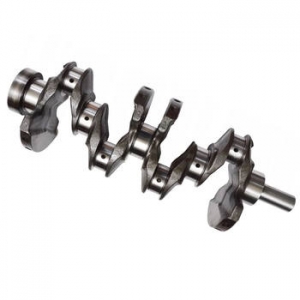 The Ultimate Guide to Getting
The Ultimate Guide to Getting
 The Unsung Heroes: Unveiling t
The Unsung Heroes: Unveiling t
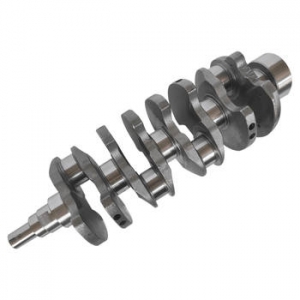 Unlocking Power: A Deep Dive i
Unlocking Power: A Deep Dive i
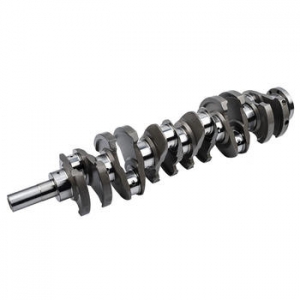 The Ultimate Industrial Cranks
The Ultimate Industrial Cranks
